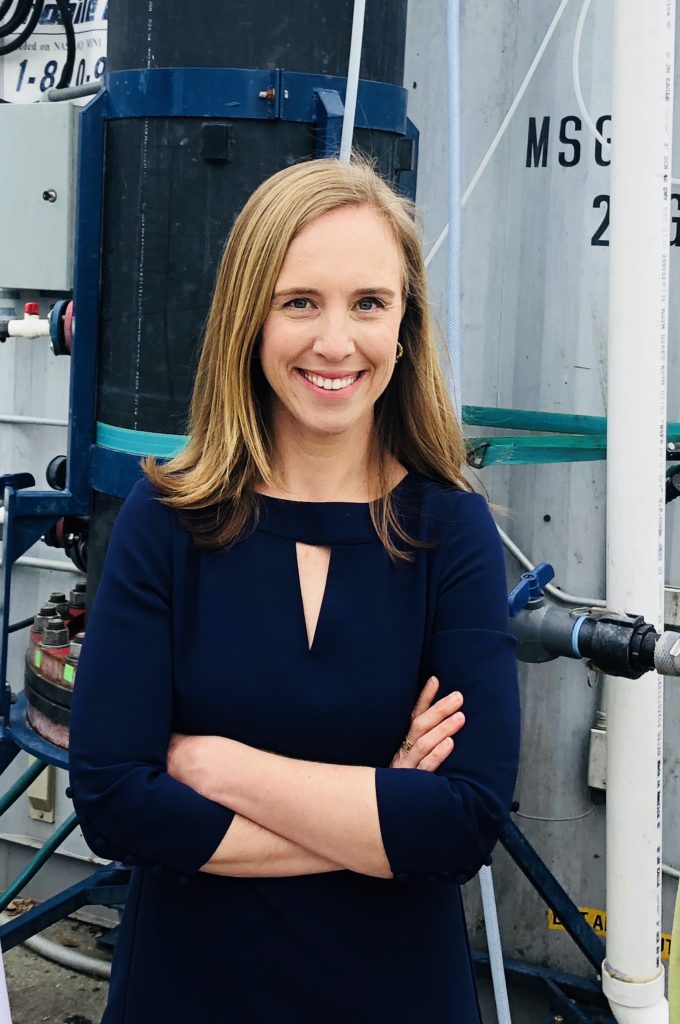Biofuels, Plastic and the Environment: Interview with Molly Morse, CEO, Mango Materials

Mango Materials is at the forefront of developing innovations in how plastic is made and, eventually, released back into the environment. The key to this? Biopolymers derived from waste gas. “We believe biopolymers are critical to keeping our natural environment pristine. Biopolymers are no longer just a nice-to-have – now they are a need-to-have, and PHA offers a solution that is completely harmonious with nature,” says CEO, Molly Morse.
Founded in 2010, the San Francisco-based company produces a naturally occurring biopolymer derived from waste biogas (methane) at prices, they claim, are competitive with conventional oil-based plastics. Mango Materials’ PHA bio-polymer plastics are biodegradable, which means they have the potential to vastly reducing plastic pollution and can degrade naturally, even in oceans. Molly Morse, CEO, is at the helm of Mango Material’s dynamic team of engineers, scientists, entrepreneurs and innovators, which, in 2019 alone, was named one of the Next 50 Companies to Disrupt the World by Biofuels Digest; it is also listed on the Global Cleantech 100. Currently, Mango Materials produces solely research quantities and does not sell material samples, though projects with market-leading brands are underway.
Cleantech Group chatted with Molly to learn more about Mango Materials, how the plastics market is changing, what projects they have in the pipeline and what challenges lie ahead.
1) What issue/opportunity inspired the company to be created?
Our lightbulb moment came when we discovered that certain bacteria consume methane to produce a biodegradable material with similar properties to traditional plastics. We knew this “technology” could have the potential to simultaneously mitigate climate change and reduce plastic pollution. What if we could get carbon emissions to work for us instead of against us, and use them as a resource instead of to warm the planet? That goal continues to drive us at Mango Materials.
The unsustainable proliferation of persistent plastics and the usual take-make-waste model needs to end. Innovative materials can drive a circular economy with a positive environmental impact. If we can keep circular materials in play, then we can eliminate the concept of waste.
2) In your sector, what is the most significant issue you foresee in the 2020’s?
Competing with large-scale, low-cost, polluting plastics presents a major challenge to PHA and other biopolymers. Significant production infrastructure for traditional plastics is already in place resulting in billions of dollars of steel in the ground. Mango Materials and other biopolymer companies must scale up to increase supply and ultimately compete on price. The main challenge we face is funding infrastructure for first-of-a kind plants.
Plastic pollution is a serious environmental problem and we need solutions now. Even if a ban on non-biodegradable materials might accelerate adoption of biodegradable ones, we believe PHA can still be competitive without a ban. The production process must be scalable with a low-cost feedstock, like waste gas, to be economically advantageous. We are currently scaling up our production facility and we know that, at large scale, PHA will be competitive in price with existing petroleum-based plastics.
3) What does the competitive landscape look like and what innovation does Mango Materials bring to the market?
The competitive landscape for sustainable materials is predominantly divided into bio-based/non-biodegradable vs. biodegradable types. Although PLA and bio-based PET have gained early market dominance, neither material offers the same end-of-life options as PHA which is now the fastest growing type. PHA, a bio-based polymer, can be both bio-based and biodegradable in a wide range of industrial and natural environments, including the oceans. However, a big challenge in the supply chain is the overall limited experience with PHA in many industries. It is still considered a new material and we need to educate the industry to understand the optimal processing conditions and techniques required. That’s where we come in. Mango Materials offers world-class experience developing PHA formulations for a large variety of applications. We work with partners at every step of the supply chain to bring innovative products to market faster. We believe methane offers the best opportunity to bridge the current pricing gap between biopolymers and traditional plastics. At full commercial scale, we expect our material to match on price, while also offering superior environmental benefits.
4) What initially drew you into the bio-degradable plastics space and what was the market like when you started?
We believe biopolymers are critical to keeping our natural environment pristine. Biopolymers are no longer just a nice-to-have – now they are a need-to-have, and PHA offers a solution that is completely harmonious with nature. Biodegradable products are available now, but they are generally more expensive to produce than conventional materials. Over the years, many PHA companies have tried to break into the plastics market with limited success. Although more investment would accelerate the scaling-up process, the high cost of sugar feedstock was a primary factor that limited PHA’s widespread adoption in the past. Our waste gas technology uses a low-cost feedstock to significantly bring down production costs and improve PHA’s competitiveness.
5) What is Mango Materials focusing its efforts on today?
A global movement to reduce the use of traditional plastics throughout society has gained strong momentum and the resulting demand for PHA has been overwhelming. At Mango Materials, we are focused on creating innovative products with partners in the apparel and cosmetics markets. We are currently developing a grade of PHA for use as textile fibers to replace polluting polyester in the fashion industry, while also formulating different grades for a variety of other applications, including caps, films, 3D printing, and packaging.
6) Can you talk us though some of your example projects?
We are currently engaged in trials of our formulated PHA fiber and injection molding with market-leading brands. In order to further differentiate ourselves from raw material suppliers, we provide expertise in producing and formulating PHA for higher value applications like textile fibers. We work directly with partners to develop innovative products. We will disclose our partners at a future date, but we have joint development agreements with many well-known, forward-thinking companies that are eager to embrace new technology. They believe that sustainability is fundamental to good business and aren’t interested in a short-term story.
Sustainable fashion is not a passing fad – it’s here to stay. Concerned consumers are calling on leading brands to use more sustainable materials in their products and these brands are following through. From our partnerships, we know exciting developments are on the horizon. PHA represents the next generation of sustainable materials – climate positive and gentle on the planet.
7) What are your short-term and long-term goals?
We are making steady progress on the path to commercialization. Joint development projects provide an opportunity to formulate PHA for a range of new products that will ultimately grow the market. We are continuing to improve our formulations and conduct more melt processing trials. It’s very exciting to see strong interest from market leaders in the apparel industry.
In order to compete on price with petroleum-based plastics, we are focused on scaling up our technology to commercial-scale production facilities. In the long-term, we will validate the use of methane fermentation technology and prove the scalability of our manufacturing process.



